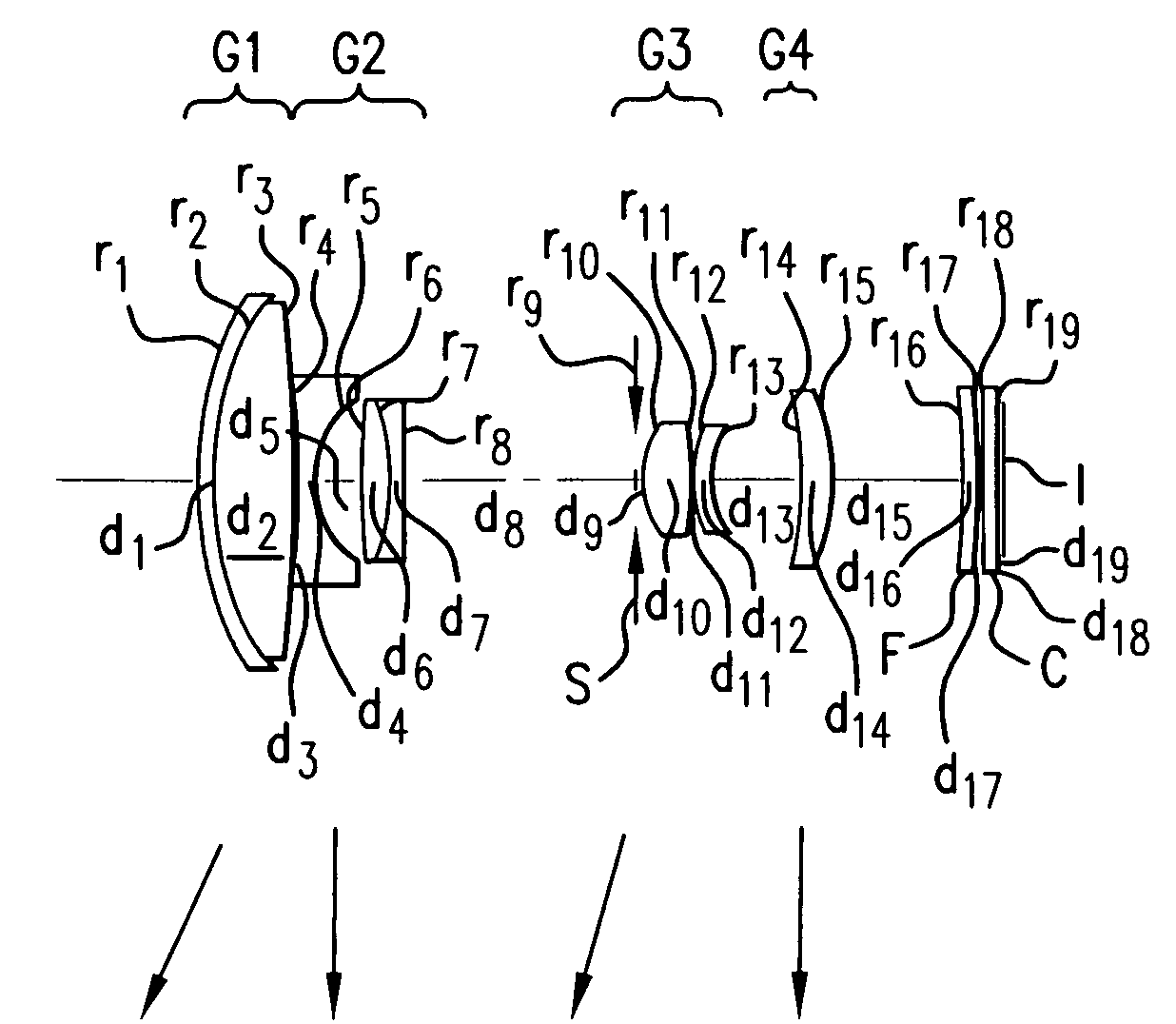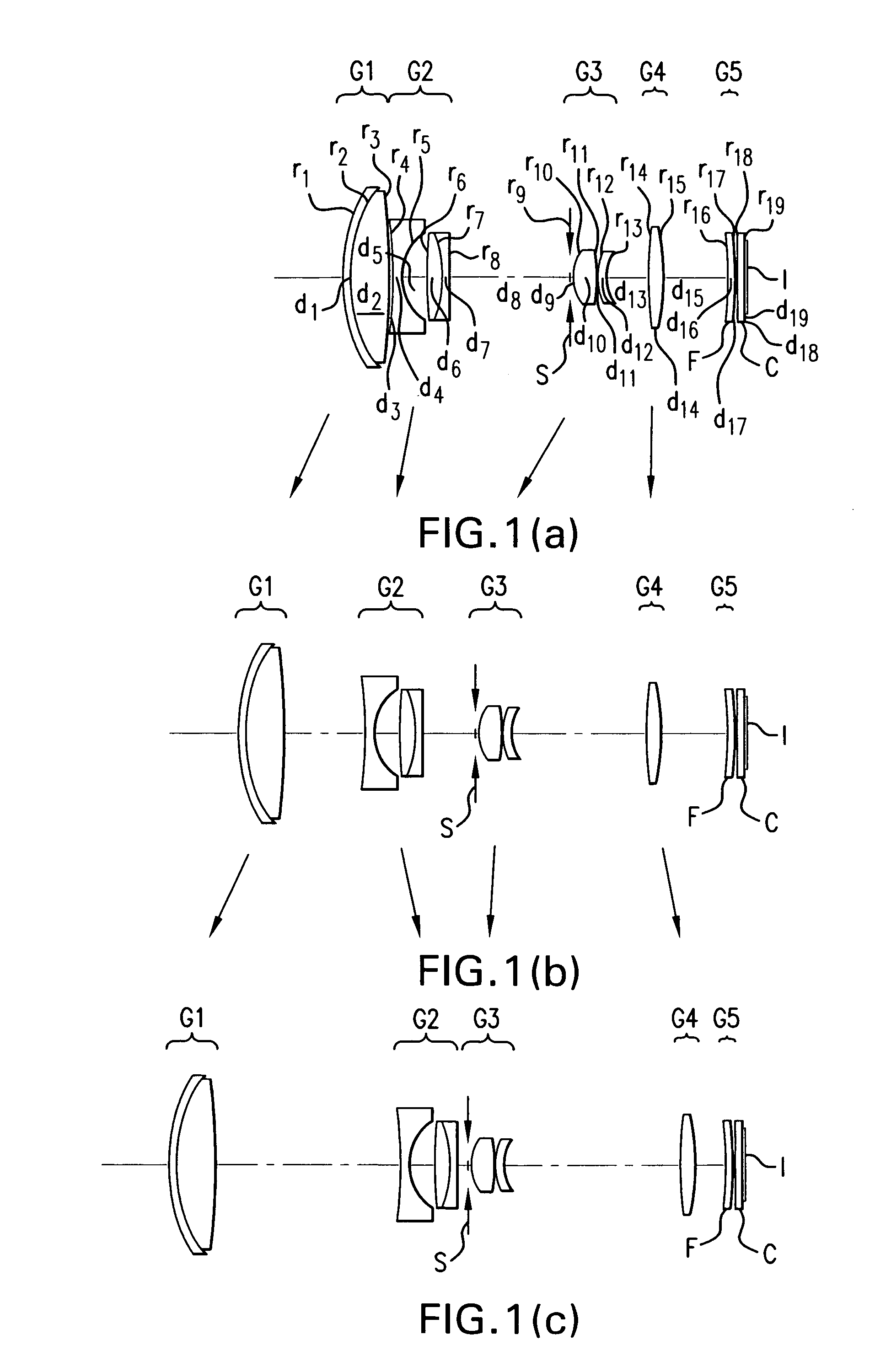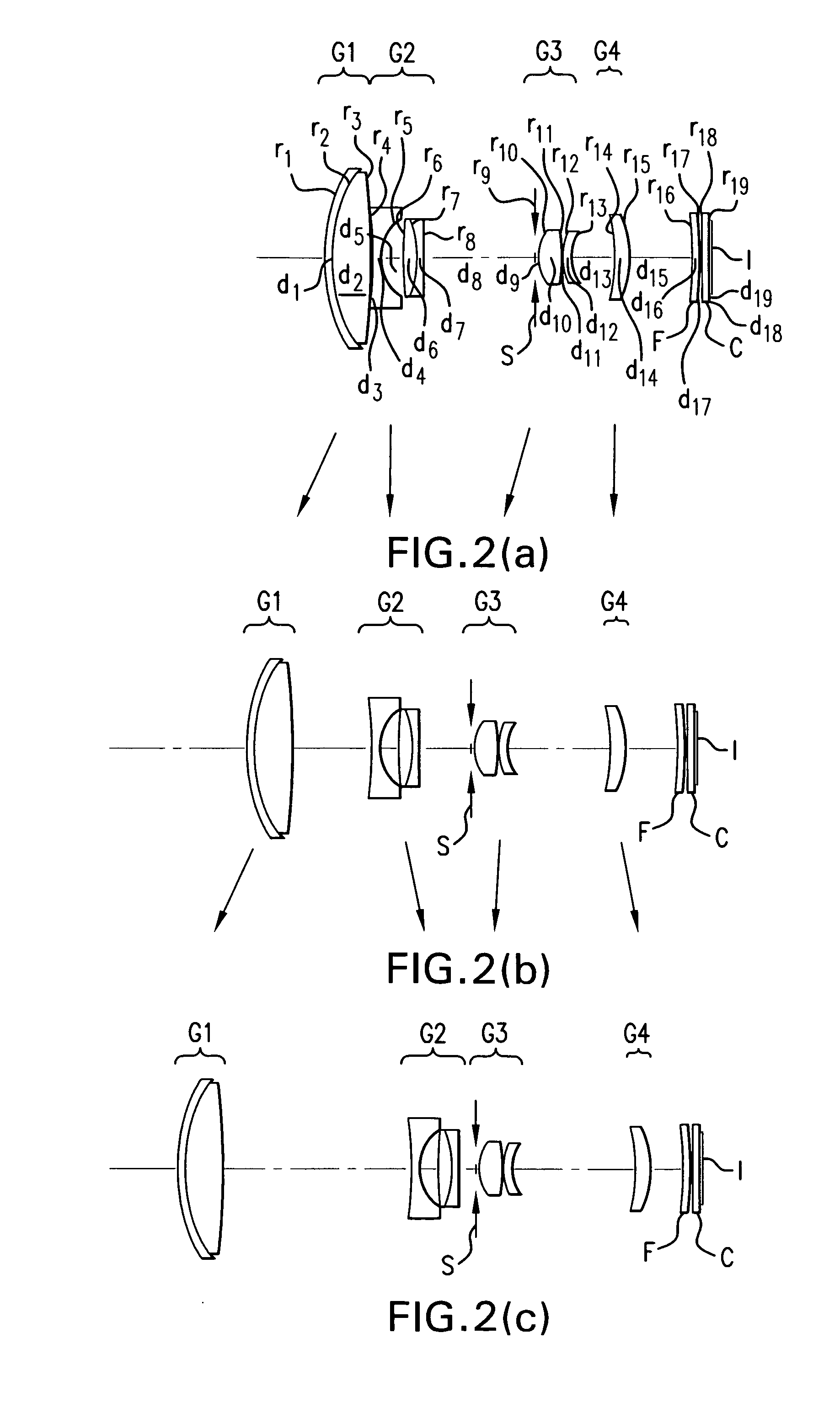Zoom lens and imaging apparatus incorporating the same
a technology which is applied in the field of zoom lens and imaging apparatus, can solve the problems of increased lens fabrication cost, increased processing difficulty, and increased surface precision of aberration properties, so as to reduce the number of lenses, and improve the effect of chromatic aberration
- Summary
- Abstract
- Description
- Claims
- Application Information
AI Technical Summary
Benefits of technology
Problems solved by technology
Method used
Image
Examples
example 1
[0117]Example 1 is directed to a zoom lens made up of, in order from its object side, the first lens group G1 of positive refracting power, the second lens group G2 of negative refracting power, the aperture stop S, the third lens group G3 of positive refracting power, the fourth lens group G4 of positive refracting power and the fifth lens group G5 of negative refracting power, as shown in FIG. 1.
[0118]Upon zooming from the wide-angle end to the telephoto end, the respective lens groups move as follows. Throughout Examples 1 to 10, the intermediate state is defined as the point of change in the direction of movement of the second lens group G2, the third lens group G3 or the fourth lens group G4 from the wide-angle end to the telephoto end.
[0119]The first lens group G1 moves toward the object side from the wide-angle end to the telephoto end.
[0120]From the wide-angle end to the intermediate state, the second lens group G2 moves toward the object side while the spacing between the f...
example 2
[0125]Example 2 is directed to a zoom lens made up of, in order from its object side, the first lens group G1 of positive refracting power, the second lens group G2 of negative refracting power, the aperture stop S, the third lens group G3 of positive refracting power and the fourth lens group G4, as shown in FIG. 2.
[0126]The first lens group G1 moves toward the object side from the wide-angle end to the telephoto end.
[0127]From the wide-angle end to the intermediate state, the second lens group G2 moves toward the object side while the spacing between the first lens group G1 and it grows wide and the spacing between it and the third lens group G3 becomes narrow and, from the intermediate state to the telephoto end, the second lens group G2 moves toward the image side while the spacing between the first lens group G1 and it grows wide and the spacing between it and the third lens group G3 becomes narrow. In the intermediate state, the second lens group G2 is positioned a little more...
example 3
[0132]Example 3 is directed to a zoom lens made up of, in order from its object side, the first lens group G1 of positive refracting power, the second lens group G2 of negative refracting power, the aperture stop S, the third lens group G3 of positive refracting power and the fourth lens group G4, as shown in FIG. 3.
[0133]Upon zooming from the wide-angle end to the telephoto end, the respective lens groups move as follows.
[0134]The first lens group G1 moves toward the object side from the wide-angle end to the telephoto end.
[0135]From the wide-angle end to the intermediate state, the second lens group G2 moves toward the object side while the spacing between the first lens group G1 and it grows wide and the spacing between it and the third lens group G3 becomes narrow and, from the intermediate state to the telephoto end, the second lens group G2 moves toward the image side while the spacing between the first lens group G1 and it grows wide and the spacing between it and the third l...
PUM
 Login to View More
Login to View More Abstract
Description
Claims
Application Information
 Login to View More
Login to View More - R&D
- Intellectual Property
- Life Sciences
- Materials
- Tech Scout
- Unparalleled Data Quality
- Higher Quality Content
- 60% Fewer Hallucinations
Browse by: Latest US Patents, China's latest patents, Technical Efficacy Thesaurus, Application Domain, Technology Topic, Popular Technical Reports.
© 2025 PatSnap. All rights reserved.Legal|Privacy policy|Modern Slavery Act Transparency Statement|Sitemap|About US| Contact US: help@patsnap.com



